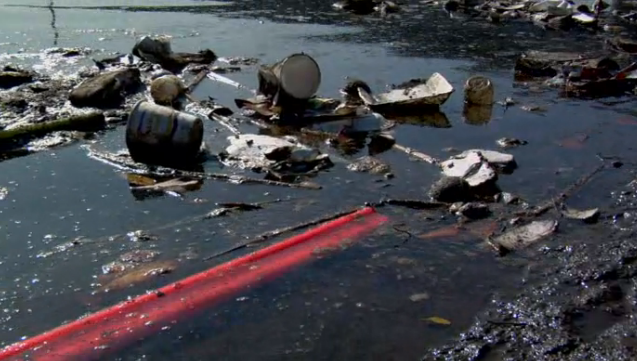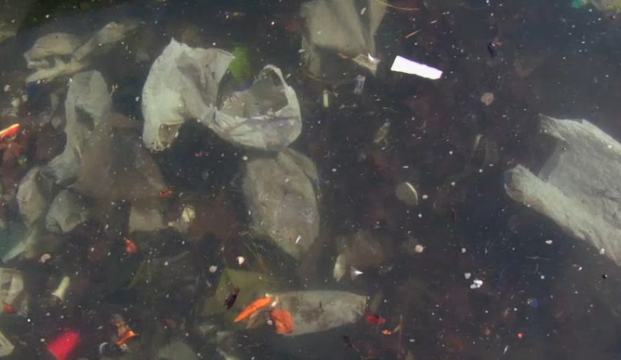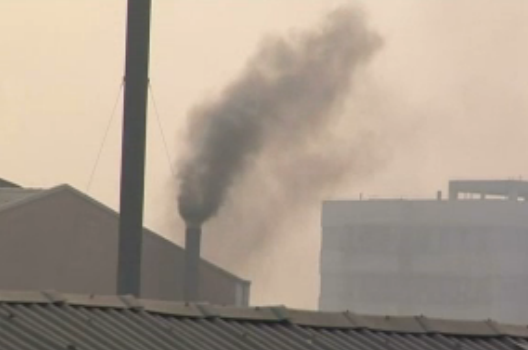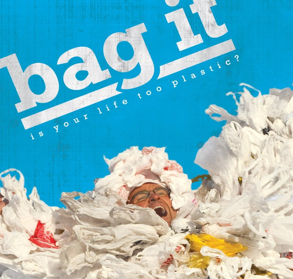As I sat down to watch the documentary “Bag It,” which was described as “an extensive investigation into plastic and its effect on our waterways, oceans and even our bodies,” I realized something. I was about to drink a green juice in a plastic bottle and eat a kale salad out of a plastic box…that I had taken home in a plastic bag. “Oh crap,” I thought…”I better finish this stuff before I watch the movie,” knowing that my level of awareness would be totally changed once I watched it. Funny how we do that.
I watched this documentary because my Dad told me I’d be interested in it. He said after watching it, he stopped buying plastic water bottles and switched to a reusable bottle. Awesome. I’ve known for awhile that plastic isn’t the coolest, but I had a feeling this documentary was going to bring my consciousness about plastic to another level. Overall, the way it was filmed was a tad cheeseball-ish at times and jumped around a bit, but the topic of plastic is super important.
Here are some of the facts about plastic I learned:
What’s really going on?
“There’s a dirty little secret here, even if we don’t want to admit it. Plastic sticks around for a REALLY long time.”

We use a plastic bag for a couple of minutes and it remains an environmental burden for hundreds of years. Most plastic products are designed to be used for less than one day (water bottles, food containers, etc). This plastic is literally filling up our Earth in landfills!!
Plastic bags are made from fossil fuels (non-renewable resources), and 60,000 plastic bags are used in the US every 5 seconds.
1 million plastic cups are used on US airline flights every 6 hours.
2 million plastic bottles are consumed in the US every 5 minutes — plastic bottle consumption uses 17 million barrels of oil and generates 2.5 tons of carbon dioxide per year.
The average American contributes 800 pounds of plastic to the waste stream per person per year. The 3 things we use and throw away the most are bags, bottles and cups.
About 6 million pieces of litter enter the ocean every day, a majority of which are plastic. Plastic is the most pervasive form of ocean litter. Plastic bags fill the ocean and choke marine life. Plastic kills over 100,000 marine animals each year. In some parts of the ocean, there’s 40 times more plastic than food for marine life. Sunlight breaks down the plastic, and the marine life thinks its food, filling them with toxic chemicals…which we are then eating on our dinner plates!! :(


In addition to the environmental concerns, chemicals in plastic (especially BPA and phthalates) are affecting human development – the brain, behavior, hormones and more. (Read more on BPA and phthalates). Phthalates are often used in cosmetics, perfumes, and many beauty products, commonly labeled as “fragrance.” BPA and pthalates are known to be endocrine-disrupting, hormone level-changing, and disease-causing.
What about recycling?
Yes – it is much better for the environment to turn old goods into new goods instead of pulling raw materials from the Earth. But a lot of plastics get used only one more time (they get recycled into things that can’t be recycled again), and a lot of our plastic is shipped to Asia and melted, which creates a ton of toxicity in the air, waterways, and creates awful working conditions. The bottom line is that regardless of recycling, a ton of plastic is ending up in our oceans and wrecking our planet and our health. Recycling can’t do everything for us, so the key is to reduce our plastic consumption.

“If we take all of the energy we’re putting towards getting more STUFF and plug it into our communities and social interactions with family and friends, not only do we create less waste, but we have more fun.” – Bag It movie
DUDE! Plastic sucks. What can we do?
Ok, obviously you don’t have to freak out about every single plastic thing. I know, some things are unavoidable, and I certainly have a few favorite things that are packaged in plastic material that would be hard to quit buying. BUT- you can become more conscious and aware of your plastic consumption. Everybody has the capacity to do something!
Examples of how to reduce your output of plastic into the environment:
- Bring your own reusable bags to the grocery store.
- Bring your own reusable cup to the coffee shop.
- Use a reusable water bottle (I love my glass one by bkr).
- Buy things with less packaging whenever possible (especially single-use disposable packaging).
- Reduce what you consume. Buy less stuff!!
- Reuse things that you’ve already purchased.
- Check the ingredient labels on your products and buy BPA and phtalate-free.
- Volunteer to help clean up your community.
ORGANIZATIONS & RESOURCES (info obtained from BagItMovie.com)
The Bag It team has come across countless amazing organizations dedicated to the cause:
ORGANIZATIONS
The Surfrider Foundation is a nonprofit grassroots organization dedicated to the protection and enjoyment of our world’s oceans, waves and beaches.
Eco-cycle in Boulder advocates a zero-waste system, which addresses our resource use from product design to disposal.
The National Oceanic and Atmospheric Administration (NOAA) is a federal agency focused on the condition of the oceans and the atmosphere.
The Algalita Marine Research Foundation is dedicated to the protection of the marine environment and its watersheds through research, education and restoration.
Oceana is the largest international organization focused solely on ocean conservation.
TEDX is a nonprofit organization dedicated to compiling and disseminating scientific evidence on the health and environmental problems caused by low-dose exposure to chemicals that interfere with development and function.
Beach Environmental Awareness Campaign Hawai’i (B.E.A.C.H.) is an all volunteer, nonprofit organization concerned with bringing awareness and solutions to the problem of marine debris on Hawaii’s beaches.
Plastic Bag Free is attempting to get rid of disposable bag use across the UK.
The Campaign for Safe Cosmetics is a coalition effort launched in 2004 to protect the health of consumers and workers by securing the corporate, regulatory and legislative reforms necessary to eliminate dangerous chemicals from cosmetics and personal care products.
The Plastic Pollution Coalition aims to end the global dependence on disposable plastic, the primary source of plastic pollution and reduce the overall global plastic footprint for individuals, businesses and organizations.
RESOURCES
The Environmental Working Group documents research about environmental and industrial toxins that build up in our bodies.
Earth 911 offers a database of recycling facilities nationwide, searchable by zip code.
The Skin Deep Database provides safety ratings for nearly a quarter of all products on the market—more than 55,000 products with more than 9,000 ingredients.
Chemical Body Burden presents facts and figures about 700 chemical contaminants found in the human body.
Scientific American provides information about Bisphenol A (BPA), the key component used to make epoxy resin and polycarbonate plastic, which are used to make many consumer goods.
REUSABLES
ChicoBag specializes in offering compact reusable bags and lifestyle totes that are fashionable, environmentally friendly and designed to be unforgettable.
ECOBAGS carries canvas totes, shopping bags, lunch bags, produce bags, string bags and water bottles
Klean Kanteen is the original, eco-friendly, BPA-free steel water bottle.
Life Without Plastic is an extensive on-line store whose goal is to offer you products that are completely devoid of plastic.
EcoTensil, maker of silky-smooth paperboard utensils, provides a “sampling” experience while offering an eco-friendly alternative to plastic sampling spoons. Tell your local grocers and ice cream shops.
Do you have a creative way to reduce plastic consumption? Know a great company that’s dedicated to not harming the environment or our bodies? Share in the comments!



Ritu says
adding this to my Netflix!